How to Apply Thermal Paste
Prepare the contact surface
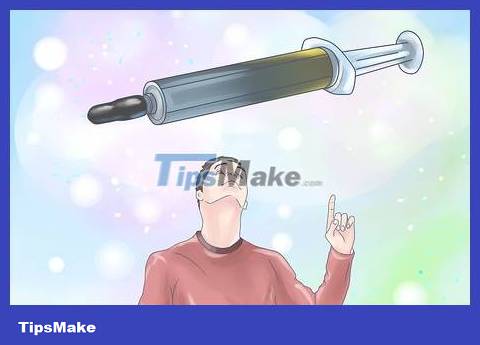
Choose a good thermal paste. Most basic adhesives contain silicon and zinc oxide. More expensive products have heat-conducting components such as silver or ceramic. Although silver or ceramic thermal paste is more effective in heat transfer, basic thermal paste is enough to meet the requirements.
If you plan to overclock your computer, you should use thermal paste whose main ingredients are silver, copper or gold. They are the best thermal conductors and are widely used in heat dissipation products.
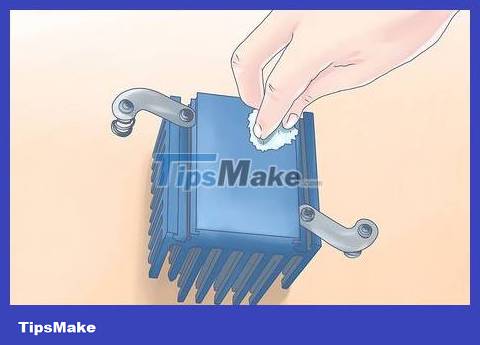
Clean the CPU surface and heatsink. Use a cotton ball or cotton swab soaked in isopropyl alcohol to gently clean the surface of the CPU and heatsink. The higher the alcohol concentration, the better. 70% is good enough but 90% is even better (if you can earn it).

Smooth the surface of the heatsink and processor if necessary. Ideally, these two contact surfaces are completely flat and there really is no need for thermal paste. If the base of the heatsink is rough, you can wet sand it with fine sandpaper to fix it. Unless achieving optimal cooling performance is your goal, this step is not necessary.
Thermal paste is designed to fill gaps and imperfections on contact surfaces. Because modern production techniques cannot create flawless surfaces, thermal paste is still an indispensable part.
Apply thermal paste to the round base heatsink
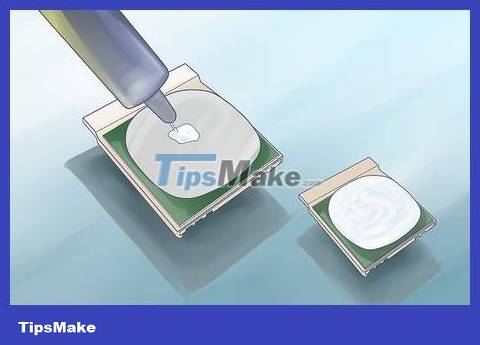
Apply a small drop of thermal paste to the center of the heatsink base. You should use drops of glue smaller than a grain of rice. If somewhere it says you need to use a 'pea sized' amount then that is too much and the thermal paste will stick to the motherboard.
With a round base heatsink, spreading thermal paste evenly across the contact surface is not necessary.
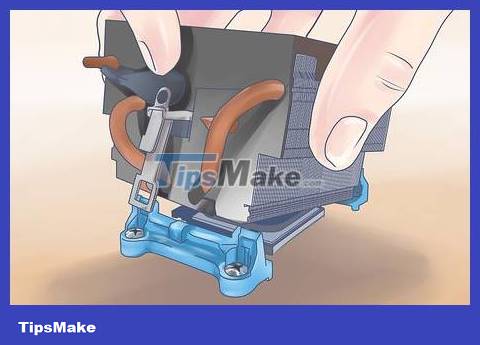
Attach the heatsink to the processor. Install the heatsink directly onto the processor in a balanced manner. At this time, the thermal paste drops will spread themselves across the contact surface, creating a thin and even layer of glue, filling all gaps and leaving no residue on the surfaces.
When exposed to heat, the glue will spread thinner and wider towards the edge. Therefore, using a small amount of thermal paste is very important because of the effectiveness it brings.
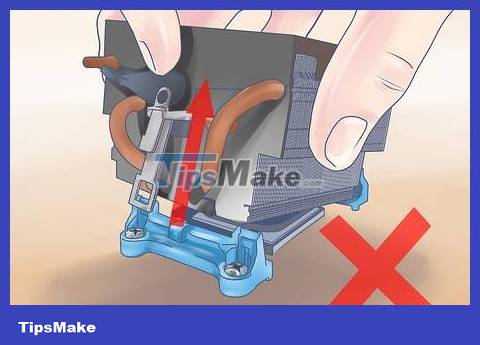
Avoid removing the radiator once installed. It is difficult to check whether the thermal paste has been applied correctly or not. By doing so, the seal that was created when installing the heatsink will be broken and you will have to go through the entire process again, first by wiping off the old thermal paste and then applying the new one.
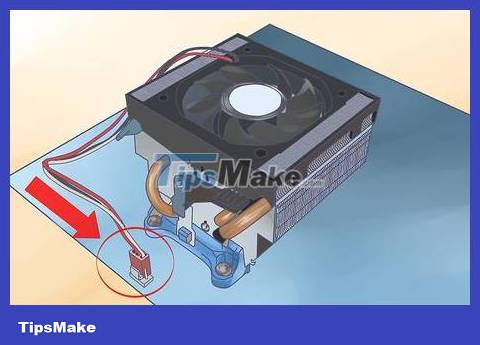
Reattach the fan to the motherboard. CPU fan cables need to be plugged into the CPU fan slot because they often have PWM functionality, allowing the computer to automatically adjust fan speed without changing voltage.
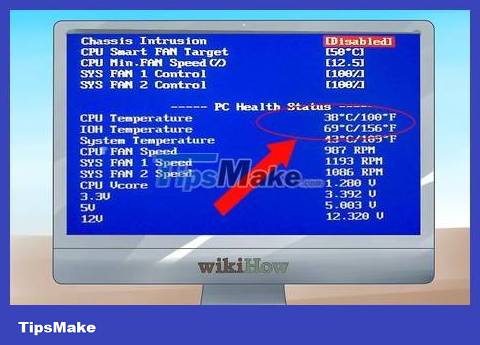
Restart the system. Check to see if the fan is spinning or not. Enter the BIOS by pressing F1 or Del when the computer is in the power-on self-test or POST phase. Check if the temperature is normal: The CPU should be below 40 degrees Celsius when running, as should the graphics processor.
Apply thermal paste to the square base heatsink
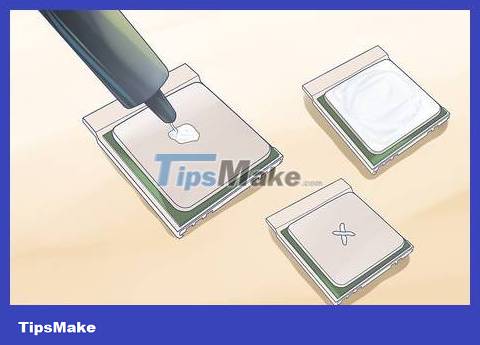
Apply glue to the base of the heatsink. With square base heatsinks, applying glue will be a bit more difficult because if you just put a drop of glue on the surface and press the base down, the glue will not cover the entire contact surface. The methods being applied are quite diverse. Here, we will only mention a few of the most popular methods:
Straight line method – Place two thin, parallel strips of thermal paste on the base of the heatsink. The distance between them should be one-third the width of the processor. The strips themselves should be approximately one-third the width of the processor.
Cross method – This method is quite similar to the above method, except that the strips intersect to form an 'X' shape instead of being parallel. The length and thickness of the strips are constant.
Spread method – Most popular and effective, this method takes a little more effort. Here, we will apply a small amount of thermal paste to the base of the radiator. Wear plastic finger gloves or a plastic bag and use your fingers to spread the glue evenly across the surface. Don't forget to spread the glue over the entire surface that comes into contact with the processor and make sure that the glue layer is not too thick. In most cases, the glue should be just enough to cover the metal underneath.
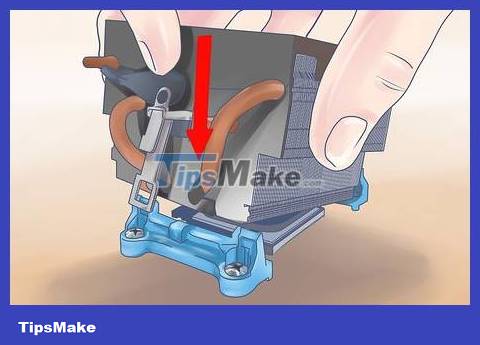
Install the heatsink. With the first two methods, you need to install it straight down in a balanced manner to ensure that the glue will spread over the entire surface. With the latter method, you MUST tilt the radiator slightly when installing to prevent the formation of air bubbles. That's because usually, thermal paste is spread too thin, not preventing the formation of air bubbles when applied.
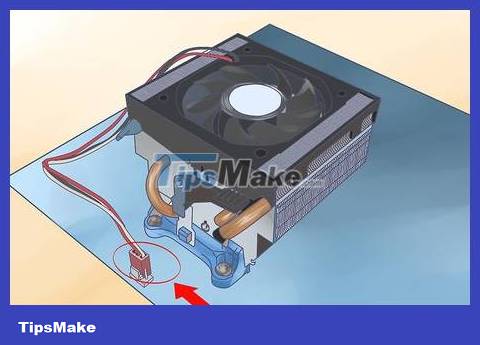
Reattach the fan to the motherboard. The CPU fan cable should be plugged into the CPU fan slot because it usually has a PWM function, allowing the computer to automatically adjust the fan speed without changing the voltage.
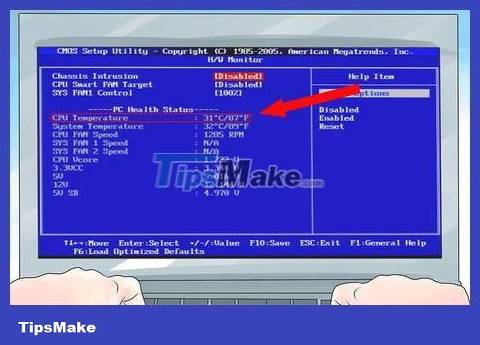
Restart the system. Check to see if the fan is spinning. Enter the BIOS by pressing the F1 or Del key during the POST phase. Check if the temperature is normal: The CPU should be lower than 40 degrees Celsius when running, as should the graphics processor.
You should read it
- What is thermal paste?
- Steps to recheck thermal paste for computer CPU
- How to Clean Thermal Paste
- Using liquid metal instead of thermal paste, Asus laptops will be 10 to 20 degrees cooler than usual
- What does the hole in the back cover of some Intel CPUs do?
- 3 ways to prevent GPU Thermal Throttling
- How to copy and paste on Mac
- You have to use thermal paste properly?
- What is 'Thermal Throttling'?
- How to Cut and Paste
- Fixing errors cannot Copy Paste in Windows
- How to Copy and Paste on Mac






 What is thermal paste?
What is thermal paste? Steps to recheck thermal paste for computer CPU
Steps to recheck thermal paste for computer CPU How to Clean Thermal Paste
How to Clean Thermal Paste Using liquid metal instead of thermal paste, Asus laptops will be 10 to 20 degrees cooler than usual
Using liquid metal instead of thermal paste, Asus laptops will be 10 to 20 degrees cooler than usual What does the hole in the back cover of some Intel CPUs do?
What does the hole in the back cover of some Intel CPUs do? 3 ways to prevent GPU Thermal Throttling
3 ways to prevent GPU Thermal Throttling